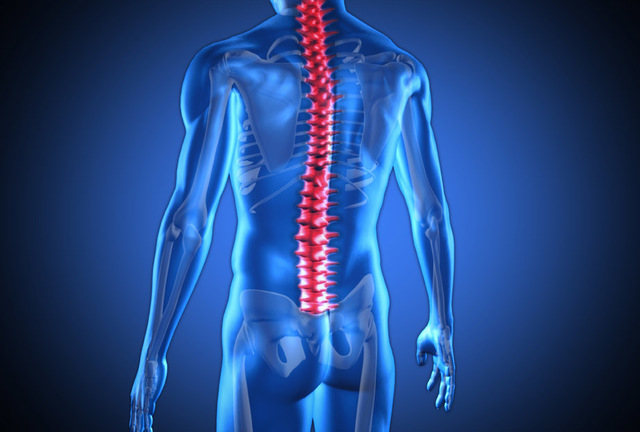Be kind to your spine

Back pain is the most commonly reported pain condition in America. It affects 8 out of 10 people at some point during their lives. In fact, one-quarter of American adults report having low-back pain lasting at least one whole day in the past three months. In some instances, the pain can become chronic resulting in impaired quality of life and enjoyment, decreased productivity, and increased health care costs. Imagine being unable to get out of bed easily (or at all), dress ourselves, pick up our child or grandchild, or work and make a living.
Body mechanics describes the way we move as we go about our daily lives. It includes how we hold our bodies when we stand, sit, sleep, and lift. And poor body mechanics can result in pain, injury, and degeneration of spinal structures like discs and joints. Let’s take a look at how we can improve our body’s mechanics.
Dr. Nina’s What You Need To Know: About Being Kind To Our Spine
Posture
Slouching can put stress on the muscles and ligaments that support our spine. Experts recommend aligning our ears with our shoulders as well as drawing our shoulder blades back, like “angel wings.”
Our head weighs approximately 10 pounds. And, for every inch that we tilt it forward—slouching, looking down at our mobile phones, reading a book in our lap—the pressure doubles. Two or three inches can equate to 20-30 pounds of weight on our spine!
Balanced diet
Eating well is a key component to maintaining a healthy weight. And extra pounds add strain, stress, or tilting that can contribute to back pain.
Additionally, we want to nourish the muscles and ligaments that support our spine and the bones that comprise it. Lean proteins, fruit and veggies, and healthy fats provide the needed nutrients. And, calcium and vitamin D are essential to keeping our bones strong and fending off osteoporosis, a condition where our bones become weak and are more likely to fracture.
Sleeping
We spend approximately one-third of our lives slumbering. So it is important we are “appropriately positioned.” Compared to sleeping on our stomach or back, sleeping on our side places the least amount of pressure on our spine. Strategically placing pillows for support under our head and in between our legs can decrease pressure as well.
Additionally, our mattresses, matter. Experts recommend firm mattresses and flipping them twice a year and examining for wear and tear, dents and dings.
Commuting
We spend a lot of time sitting in our cars. And it is no surprise that poor posture in our vehicle can be “back breaking.” When driving, consider: adjusting our seats so we do not have to lean forward to hold the steering wheel; bending our knees and hips as opposed to keeping our legs stretched; keeping our buttocks against the back of the seat to avoid slouching; and utilizing pillows (or a towel) to sit on, between the shoulder blades, or behind the curve of our lower back.
Desk jobs
Many of us sit at a desk for many, many, many hours a day. And, poor posture and looking down can put unnecessary stress on our spines. Some tips to “straighten up” our posture while sitting include: positioning our computer at eye level; keeping our knees at 90 degrees and our spine aligned; utilizing a footrest; and getting up and moving around frequently.
Lifting items
Avoid bending and twisting by turning toward the object and then picking it up; this decreases unnecessary force on our spine’s facet joints and disks. And whenever possible, push heavy items instead of pulling. This allows us to use both our leg and back muscles to move an object.
Experts have described a number of ergonomic methods to lift objects:
- Squat lift (heavy objects): get as close as possible to the object, plant our feet shoulder width apart, squat down, and wrap our arms around it. Use our legs—the strongest and largest muscles in our body—to stand up while keeping our head up, shoulder blades in “angel wing” position, and spine straight. The fulcrum, or bending points, should be at the hips, knees, and ankles, not our backs. When putting the object down, use the same technique.
- Golfer’s life (light objects): place all of our weight on one leg. Then place the opposite hand on a support—chair, desk, wall—and bend straight over from the hip. The non-weight-bearing leg will come up off the ground a little. Make sure to keep our head up and back straight.
- Crane lift (baby, clothes inside a hamper): set our feet shoulder-width apart and bend our knees slightly. Then, bend at the hips, keep our buttocks out behind us, and pull the item towards our body while keeping our head and back straight.
Reduce stress
Muscle tension can lead to back pain. Consequently, activities that decrease stress—yoga, meditation, deep breathing—can help prevent back pain.
Quit smoking
It is believed that lighting up can narrow blood vessels, which equates to a decrease and oxygen and nutrients getting to our spine. This “starvation” state increases our risk for a back injury as well as its ability to heal.
Our spine is our backbone. Its bones, muscles, nerves, and other tissues are critical to nearly every move we make. If you suffer with back pain consult your doctor. Our spine is particularly vulnerable to injury and wear and tear. All the more reason we should learn to “Handle With Care.”
This information is for educational purposes and should not be considered specific medical advice. Always consult with a qualified medical professional regarding your individual circumstances.
Dr. Nina Radcliff is dedicated to her profession, her patients and her community, at large. She is passionate about sharing wise preventive health measures. Contact her on Facebook or Twitter @drninaradcliff.


















